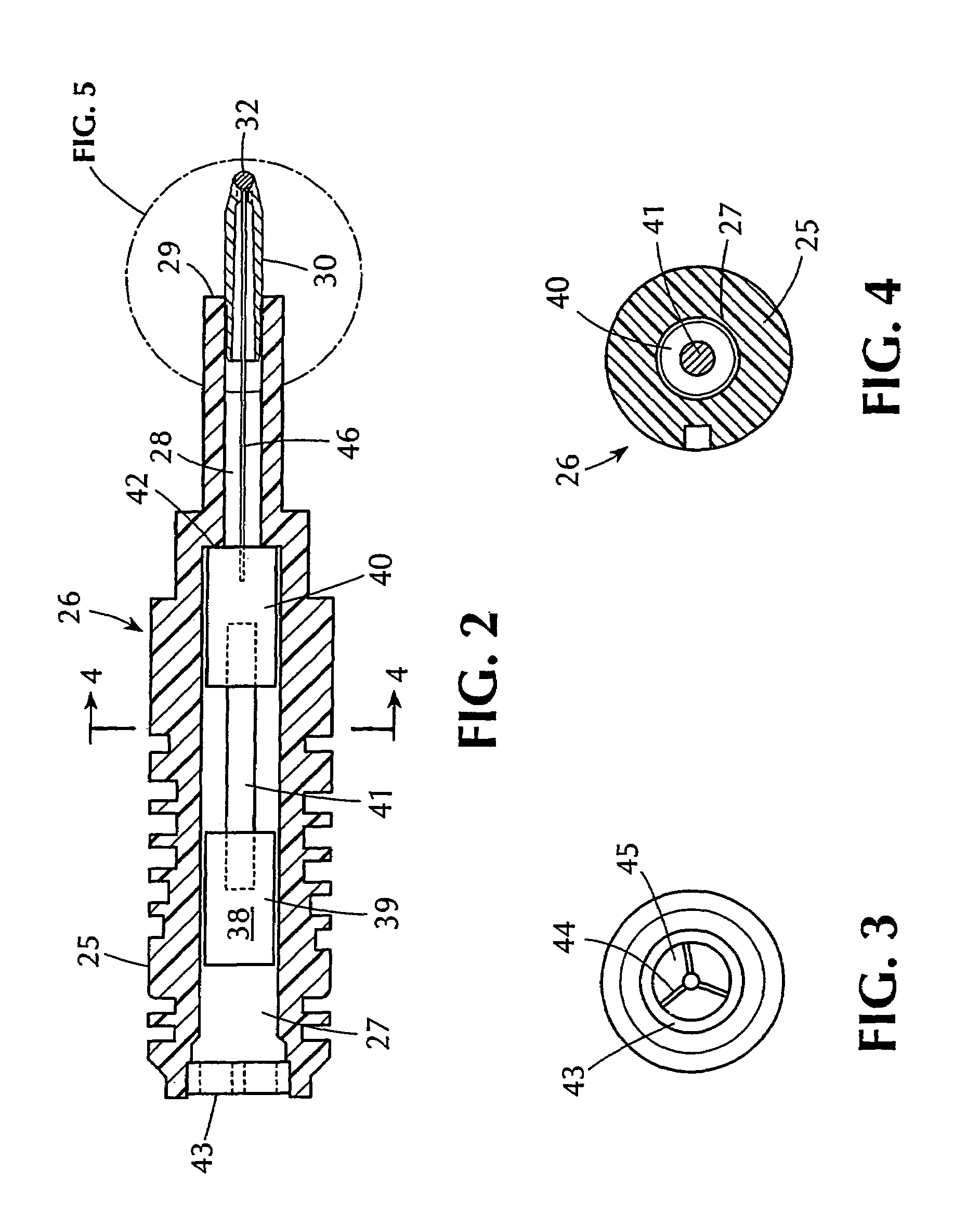Roller ball pen for pigmented inks
a technology of pigmented inks and rollers, applied in the field of roller ball pen, can solve the problems of little control over the width and precise location of the intended line, the inability to precipitate pigment out of the low viscosity ink carrier, and the difficulty of instruments to use, so as to achieve effective agitation and redistribution of pigments, low viscosity, and low viscosity
- Summary
- Abstract
- Description
- Claims
- Application Information
AI Technical Summary
Benefits of technology
Problems solved by technology
Method used
Image
Examples
Embodiment Construction
[0024]Referring now to the drawings, the reference numeral 20 designates generally a roller ball pen according to the invention, for use particularly in applying pigmented inks to a writing surface. The pen includes an elongated pen body 21, typically of molded plastic construction, which is closed at one end 22 and formed at the opposite end with a first cavity 23, for the reception of a nib structure to be described, and a second cavity 24 forming a reservoir for an ink supply and a confined air space above the ink. In the illustrated form of the invention, the reservoir cavity 24 is formed by the walls of the pen body. However, it is contemplated that the ink supply may be contained in a replaceable cartridge (not shown) which is removably received within the cavity 24. The use of such removable cartridges is well known in the art and does not form part of this invention.
[0025]The forward cavity 23 of the pen body is of a size to snugly receive the generally cylindrically shaped ...
PUM
 Login to View More
Login to View More Abstract
Description
Claims
Application Information
 Login to View More
Login to View More - R&D
- Intellectual Property
- Life Sciences
- Materials
- Tech Scout
- Unparalleled Data Quality
- Higher Quality Content
- 60% Fewer Hallucinations
Browse by: Latest US Patents, China's latest patents, Technical Efficacy Thesaurus, Application Domain, Technology Topic, Popular Technical Reports.
© 2025 PatSnap. All rights reserved.Legal|Privacy policy|Modern Slavery Act Transparency Statement|Sitemap|About US| Contact US: help@patsnap.com



